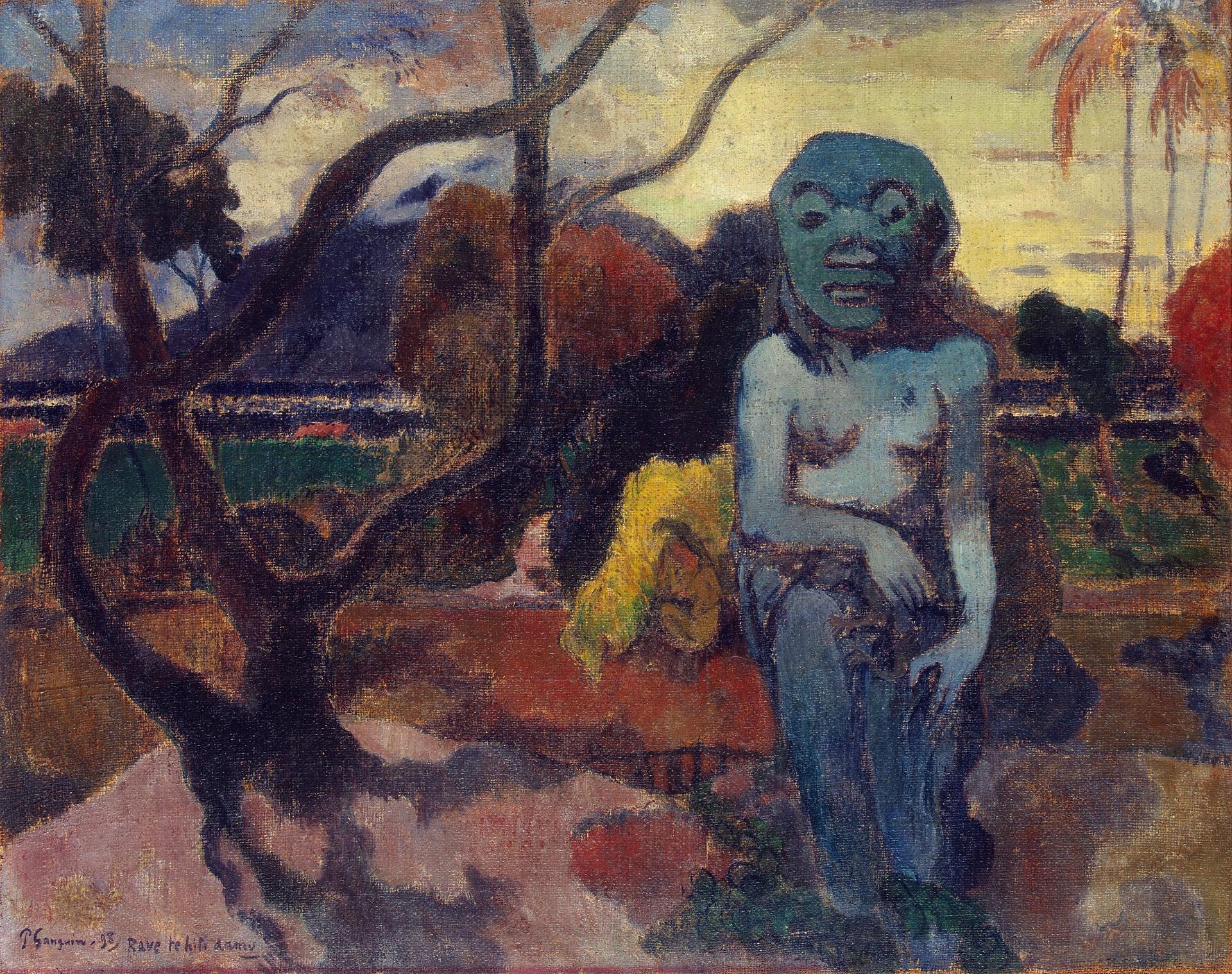art-Gauguin.com
Paul Gauguin 1848-1903
Paul Gauguin - The Idol. Rave te hiti aamu 1898
 The Idol. Rave te hiti aamu |
From Hermitage, St. Petersburg:
By the time he painted this work in 1898, Gauguin had spent five years living in Polynesia, seeking the natural, primitive life, and he was acquainted not only with the outer appearances of existence on the island but also with many of the islanders' beliefs and rituals. The idol of this painting is an indivisible part of the mysterious and exotic world that Gauguin depicted. It is not so much a sculpture as an enigmatic being, the embodiment of life untouched by civilisation. The figure's outline echoes the gnarled, winding tree trunks while the gloomy colouring reinforces the disturbing mood. This idol appeared often in Gauguin's work, and the artist called it Ovir or the savage. Oviri was the symbol of death and fruitfulness, embodying the forces of nature, both creative and destructive.